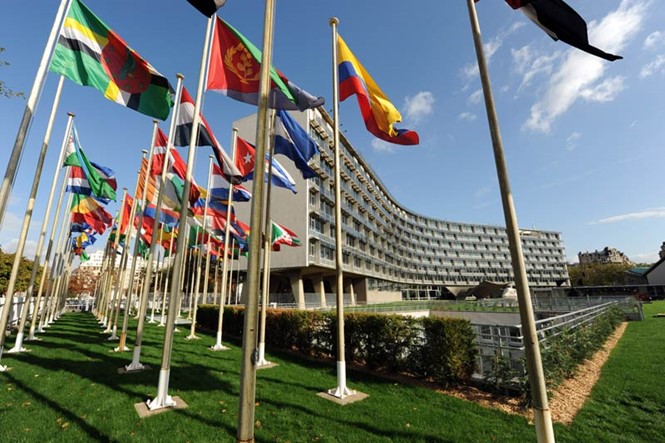A place of one's own
Creating a sense of place is no easy task. Determining the right strategy falls to branding professionals working with places. Amy Sandys previews the upcoming City Nation Place forum
The difficulty in defining ‘place branding’ comes with the difficulty of defining ‘place.’ The concept of place is fluent and elusive, never fixed and prone to change. Place means different things to different people. It can be acknowledged on the smallest or largest of scales, from individual buildings to entire regions; a deserted field to a bustling metropolis home to millions, or billions, of people.
However, the progression of globalisation, advent of supranational statism and a world characterised by increasing interconnectedness has seen the need arise for regions, nations, cities and even villages to craft a unique identity with which certain audiences will resonate. Embedded in complex issues such as diplomacy, generation and the democratic process, place making is becoming a pressing issue.
As the place brand practice grows, so too does its associated literature and organisations. One such network, dedicated to examining place branding in a global context, is the City Nation Place forum. Founded in 2015 to provide a platform in which place brand professionals could discuss, share and learn from new and existing place brand strategies, its annual global conference takes place in London on 9 November. Clare Dewhirst, founder of City Nation Place, says, “We started City Nation Place to provide a forum to discuss the challenges and opportunities of place branding, whether you’re responsible for your nation brand, your city brand, your region brand, your state brand.”
And, says Dewhirst, it was important for City Nation Place to recognise the challenges that exist in place branding of all scales. “There are transferable challenges and lessons across a whole range of places; there was a whole growth of interest in the activity,” Dewhirst says. “Our target audience is anyone responsible for place brand – or perhaps more specifically, anyone who’s responsible for delivering economic growth, attracting talent, attracting tourism or for engaging with citizens and building civic pride. Having a holistic approach to place branding improves results and makes all of those objectives easier to achieve.”
To make the event as inclusive and wide-ranging as possible, November’s City Nation Place Global welcomes speakers and delegates involved in place brand on a variety of areas and scales. In 2016, representatives from places including Tatarstan, Costa Rica, New York, Finland and Amsterdam presented approaches to place branding which required innovative, forward-thinking perspectives on the challenges places face. From crafting consumer objects based on Tatarstan’s historic and cultural identity, to encouraging Amsterdam’s tourists to make use of the city’s proximity to the Dutch coastline, to enhancing Finland’s national identity through emojis, the challenges discussed were many.
Perhaps most resonant was a presentation from Smárason and Raj Gyawali, founders of Nepalese enterprise Social Tours. Based in Kathmandu, the sustainability-focused Social Tours advocates a positive, social media-based approach in encouraging visits to Nepal following the devastating earthquake of April 2015. Anticipating a lull in visitors following the devastation caused by the disaster, an organic campaign led by Social Tours broadcasted positive tourism stories emanating from the country. Now, Nepal enjoys more tourists than it did before 2015.
A key differentiator between City Nation Place and other place-based conferences is its focus on strategy. Understanding how place branding differs according to region, as well as by target audience, is imperative in helping further develop the practice. This means avoiding the trap of focusing just on tourism – surprisingly easy when considered how closely the industry aligns with marketing practice. Ergo, much of the conference’s content goes beyond the purely visual elements of place branding. “The old-fashioned definition of place branding was to have a logo and a slogan,” says Dewhirst. “While some of that still happens, and while that is an outcome of a place brand strategy, we always ask about the strategy behind it. To create real differentiation and genuinely competitive identity, you need to be really clear what you think your place stands for, what your assets are, and how they’re being leveraged.”
Through global expansion to North America and Asia-Pacific, City Nation Place is also able to hone in on the oft-forgotten nuances which sees one region as distinct from another. This is particularly pressing when examining regions such as Europe and North America, which are often aligned under the pretext of harnessing ostensibly similar social and economic features.
In March 2018, City Nation Place will prepare for its first foray into Asia-Pacific. Much of the conference content will centre on the ‘second tier’ city boom, in which places such as China’s Guangzhou and capital of Taiwan, Taipei are beginning to challenge the traditional ‘Asian Tiger’ states for economic dominance. Dewhirst says, “There is a whole tier of second cities coming up and recognising that having a coherent place brand strategy, creating differentiation for their city, brings economic benefit. It’s a new thing in second tier city level, and there’s a developing sophistication level of approach at capital city and national brand strategy level.”
From tourism to investment, from traders to local residents, the list of potential stakeholders involved in place branding can be daunting. “If you’re going start talking about your place on the world stage, you need to put something behind what you say. If you’re going to talk about being a sustainable place, you need to be sustainable. If you’re going to talk about being an inclusive community, you need to be inclusive. In the long run, place branding can only make these places better,” Dewhirst says. Yet crafting a place brand based on reasoning, research and awareness of regional nuance allows the approaches and partnerships, so instrumental in delivering a successful place masking campaign, to guide a place into a position where its true potential is recognised. And this has wider repercussion for a place’s reputation.
















